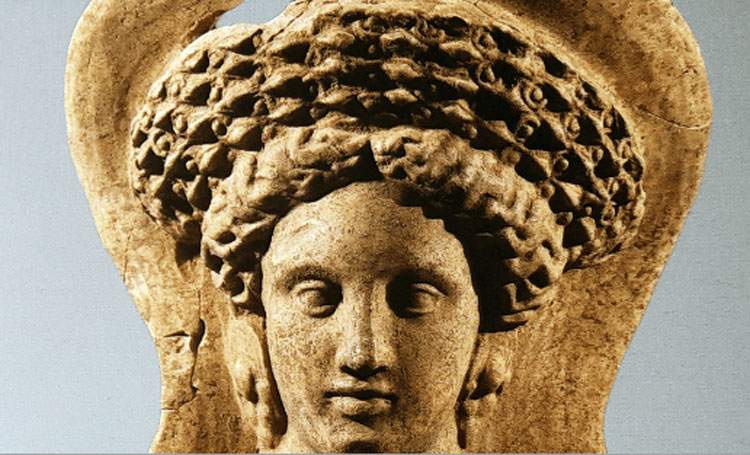How much did Etruscan art influence Massimo Campigli? In Venice, an exhibition on the subject
From May 22 to September 30, 2021 ACP - Palazzo Franchetti in Venice presents the exhibition Massimo Campigli and the Etruscans. A Pagan Happiness, curated by Martina Corgnati.
“In my paintings a pagan happiness entered as much in the spirit of the subjects as in the spirit of the work, which became freer and more lyrical”: with these words Massimo Campigli describes his visit to the Etruscan Museum of Villa Giulia in Rome in 1928, attributing to it a fundamental role in the development of the most mature phase of his artistic production.
The exhibition at Palazzo Franchetti takes its cue from these very words, offering a dialogue between Campigli’s works and the examples from the past from which he drew inspiration. About thirty-five works by the artist, specially selected, will be on display, which will be flanked by about fifty Etruscan artifacts, many of them previously unpublished and exhibited here for the first time, identified by Superintendent Margherita Eichberg together with the scholars of the Scientific Committee Leonardo Bochicchio, Simona Carosi, Daniele Federico Maras, and Rossella Zaccagnini.
In the rooms of the main floor of the palace, a profound dialogue will be established between the works of Massimo Campigli and the finds of Etruscan culture: Campigli’s deliberately archaic compositions, well represented with paintings ranging from 1928 to 1966, find the origins of their deepest inspiration in the Etruscan finds, with which a natural sharing of atmosphere, signs and colors is established. Beginning with the famous visit to the Etruscan Museum of Villa Giulia in Rome in 1928, there is a kind of return to a primordial purity in Campigli’s art, to an ancient flavor made of muted colors as fresco paintings so similar to how time has given us back Etruscan images, of shapes shaped according to the design of votive statues or amphorae, of female figures with hourglass busts that abstract into timeless images.
The exhibits present a wide typological richness, from vases to statuettes, from jewelry to sarcophagi, and this allows us to trace a universe of links that, starting from evocations, are declined into punctual references in the different sections of the exhibition. The first is devoted to the human figure, divided into men and women; the second to animals, consisting of birds, horses, and wild animals; and finally the third devoted to shapes and geometries.
Many of the finds are unpublished and come from important archaeological material recovery operations, as well as from important international museums, and now in the availability of the Soprintendenza Archeologica Belle Arti e Paesaggio for the Metropolitan Area of Rome, the Province of Viterbo and Southern Etruria.
Worth mentioning are two precious terracotta sarcophagi from the Civic Museum of Viterbo.
For info: www.acp-palazzofranchetti.com
 |
| How much did Etruscan art influence Massimo Campigli? In Venice, an exhibition on the subject |
Warning: the translation into English of the original Italian article was created using automatic tools. We undertake to review all articles, but we do not guarantee the total absence of inaccuracies in the translation due to the program. You can find the original by clicking on the ITA button. If you find any mistake,please contact us.





























